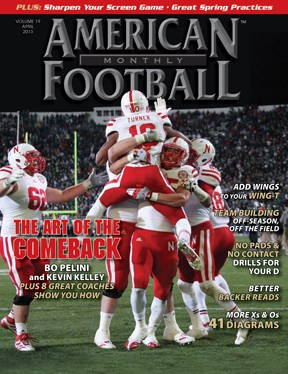Article CategoriesAFM Magazine
|
Getting the Most From Your Screen Game An effective screen game is the perfect answer to an overly-aggressive defense.by: Rich HolzerHead Coach, Meade High School (MD) © More from this issue One of the key facets of our offense has been our screen game. Meade High School had been a flex bone triple option team and there was no screen game. Screens were a foreign concept to the players. We knew screens were vital to the success of the spread offense that we were trying to implement. So this had to become a major point of emphasis for our players. We broke our screens down into two categories execution screens and advantage screens. Essentially, our advantage screens were our Fast screens on the perimeter. They were attached to run plays and checked to, or called from the sideline when the defense did not cover down on our wide receivers. Our execution screens were concepts that were called from the sideline to take advantage of overly-aggressive defenses. We break down our execution screens into two ....The full article can only be seen by subscribers.
|
|
|||||||
| HOME |
MAGAZINE |
SUBSCRIBE | ONLINE COLUMNISTS | COACHING VIDEOS |
Copyright 2025, AmericanFootballMonthly.com
All Rights Reserved





